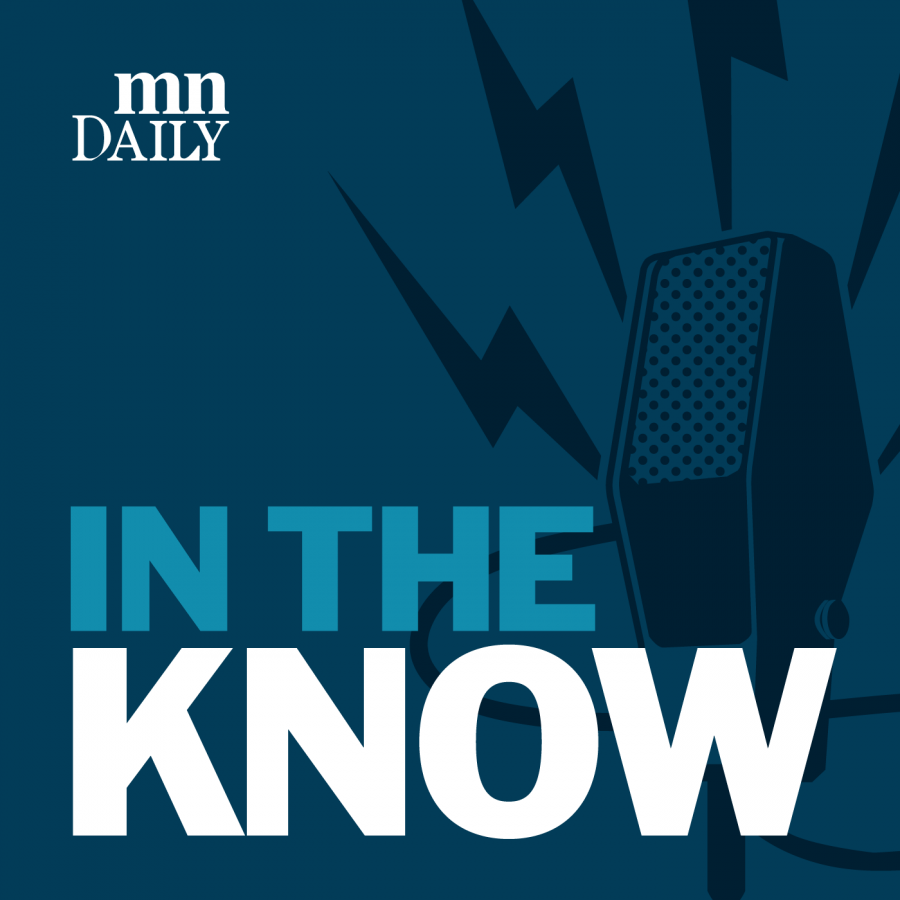RACHEL HOPPE: Hi, I’m Rachel Hoppe and you’re listening to In The Know, a podcast dedicated to the University of Minnesota. In this episode, I explored the university’s history as a land grant institution, as well as learned from other students about their own understanding of the concept.
According to the Association of Public and Land Grant Universities, (APLGU) a land grant college or university is an institution that has been designated by its state legislature or Congress to receive the benefits of the Morrill Acts of 1862, 1890 and 1994. This definition, however, leaves some with more questions about the implications of land grant institutions. I asked students around campus about their understanding of land grant universities. Students Lauren Lillie and Dola Greene weigh in on the subject.
LAUREN LILLIE: Yeah, so what I think it means is that the land that we’re on is not owned by the school. It’s owned by someone else somewhere.
DOLA GREENE: You know and honestly, I feel like that I still kind of don’t know all the way, but from my understanding, I mean, I know that this institution is built on like land that originally belonged to, you know, different Native American populations. I understand Minnesota has a large population of like Dakota and Ojibwe in particular. So, I think that’s as much as I knew about it.
HOPPE: Students’ understanding of land grant institutions is seemingly pretty broad. While some students may understand the general concept of land grant universities, there are different nuances that explain how these institutions came to be. The Morrill Act of 1862, signed by then president Abraham Lincoln, designated certain chunks of land throughout the country to be used by states specifically for the purpose of building public universities, over 100 million acres of land.
The TRUTH Project reported that in the case of the U, the state of Minnesota was given nearly 95,000 acres of land for the purpose of building a public university. The majority of acres were forcefully ceded by the Dakota in 1851. To put it simply, the creation of the UMN displaced indigenous people from around the state, taking them away from their homes.
So, the definition provided by APLGU just grazes the surface of what it means to attend a land grant institution. Many students also feel as though they aren’t well educated in regards to the topic and would like to see more efforts to educate students about the concept. University students Kaylee Carriker and Caroline Weir have some ideas for the U to increase awareness.
CAROLINE WEIR: I think that they should work on more outreach, whether it be to like a DEI (diversity, equity, inclusion) module or like education with like different clubs, Greek life, organizations on campus, even different like the different colleges on campus, just something more small scale to really be able to make that message.
KAYLEE CARRICKER: I feel, I feel like they could be doing more, yeah.
HOPPE: While some students look for new ways to implement education, others want to add it into pre-existing structures.
LILLIE: Not to be one of those people, but like, when there’s like, you know when you’re a freshman and you have to take all those like little tiny introductory courses like don’t overdrink. Maybe there could be something like a small little module for that like just teaching you what it means and like how it affects the community and stuff like that.
HOPPE: Adding content in the modules taken as part of orientation for incoming students is one way to introduce the implications of land grant schools to students. Yet, there are already resources out there explaining the University’s history that students are not aware of. The aforementioned TRUTH Project, which stands for Towards Recognition and University-Tribal Healing, is a resource sponsored by the University that explains and analyzes how indigenous communities were impacted by the land grant.
While the TRUTH Project is out there and accessible to anyone with internet connection, many affiliated with the University are unaware of its existence. When asked, students say that the U isn’t doing enough to increase awareness about the topic.
GREENE: Yeah, I don’t think so. Not at all because, you know, even you know, everybody’s syllabus. I’m pretty sure maybe it’s a requirement that everybody’s syllabus has this little blurb at the end that talks about something related to this and one people don’t really read it at the end, usually and it’s like, okay, the syllabus is done about here.
LILLIE: I would say they don’t really educate us about it like you know, like all of our professors mostly will sign off and have in their email signature like, the U of M is a land grant university, but like I don’t think we really hear about it any more than that.
HOPPE: While University may encourage things like land acknowledgements in syllabi, the content isn’t necessarily in a place where students would seek it out. Furthermore, the University historically hasn’t explained how the school’s founding impacted the surrounding community. On the history page of the University of Minnesota’s website, it explains that in 1862, the “Morrill Land-Grant Colleges Act [was] signed, establishing federal land-grant resources for schools that teach and research agriculture and mechanic arts.” While the explanation of events is accurate, it is only part of the story. It paints a picture of what the Morrill Act meant for the University, without acknowledging how surrounding communities were negatively impacted.
Elsewhere on the Office of Admissions website, a land acknowledgement is included. It says, “we also acknowledge that words are not enough.” While the University has supported efforts like the TRUTH Project in the past, some indigenous faculty feel there is still more to be done.
Vicente Diaz, the chair of the American Indian Studies department at the U, explained to me in an email that it is important for those of all cultural and racial backgrounds to learn and work through the impacts of the displacement of the Dakota and Ojibwe tribes.
“The problem is all who think that this is an AIS (American Indian Studies) or Native-person-only matter,” said Diaz. To summarize his comments, leaving issues that stem from land grant institutions to be fought against by indigenous communities only is inherently problematic. This situation portrays the displacement of Native Americans in the Twin Cities as an indigenous issue, even though they bear no responsibility for its creation and are the ones who have suffered its consequences.
To be involved in change, regardless of your background, one place to turn is the Twin Cities Mutual Aid Project. TC-MAP provides resources to get involved with the Land Back initiative here in the metro, such as the Bdote Memory Map. The memory map is a snapshot of the Dakota tribe’s relationship and history with Minnesota, both before and after being impacted by the United States.
As I mentioned earlier, Land Back is an organization that provides spaces for activism within the indigenous community as well as spaces for those to learn about the variety of issues impacting native communities, even beyond the concept of land grant institutions.
Land Back provides numerous opportunities to learn about the impact the United States’ government has on different indigenous communities around the country. For example, Landback.art is an initiative being started by the organization to uplift the experience of indigenous people by placing billboards throughout the country. The billboards will feature art by indigenous artists while simultaneously creating a dialogue regarding indigenous people in the US.
Overall, the University’s history is complex, and it can take time to understand what it means to attend the U. The actions of the government back in 1862 ultimately ended up displacing indigenous communities from their homes here in Minnesota and across the country.
This episode was written by Rachel Hoppe and produced by Kaylie Sirovy. As always, we appreciate you listening in and feel free to leave us an email at [email protected] with comments or questions. I’m Rachel, and this is In the Know.



